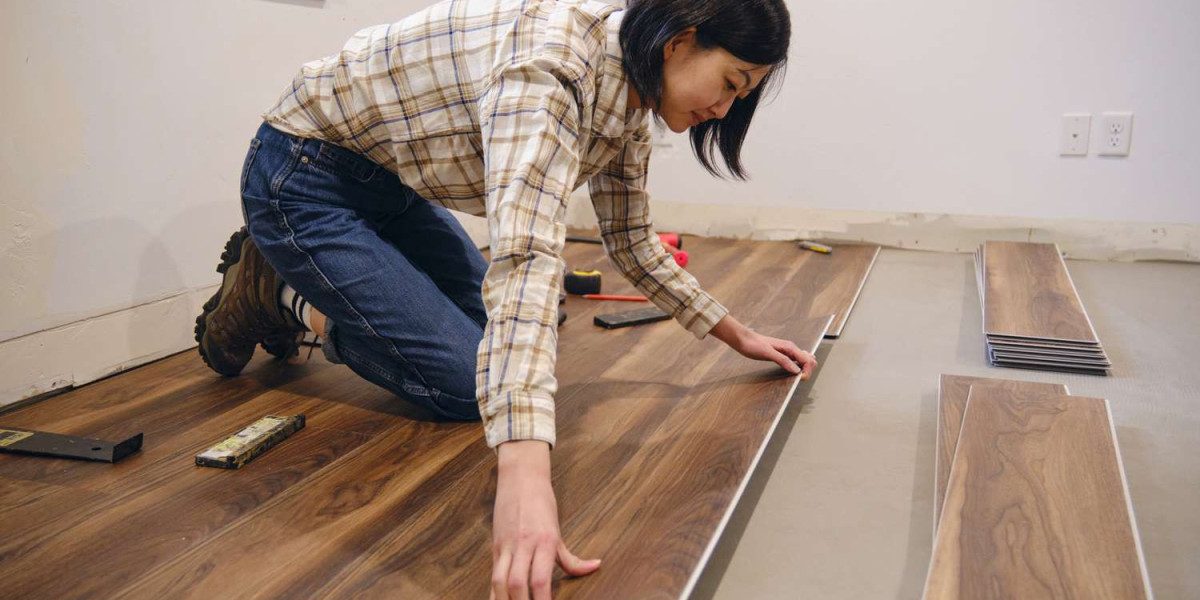The global flooring market is undergoing a significant transformation fueled by rising urbanization, sustainable building trends, and innovation in materials and design. Valued at US$ 442.4 billion in 2024, the industry is projected to expand at a CAGR of 6.7% from 2025 to 2035, reaching an impressive US$ 902.3 billion by the end of 2035. Flooring—integral to both aesthetic appeal and functionality—is seeing growing demand across residential, commercial, and industrial sectors, particularly in emerging economies where infrastructure development and smart city projects are accelerating.
Sustainable Materials and Eco-Friendly Designs Gain Traction
As global focus on sustainability intensifies, flooring manufacturers are adopting eco-conscious production methods and introducing materials with lower environmental footprints. Recycled wood, bamboo, cork, linoleum, bio-based vinyl, and reclaimed stone are becoming increasingly popular among consumers seeking sustainable interior solutions.
Moreover, circular economy initiatives are reshaping product lifecycles, with companies investing in recyclable, low-VOC (volatile organic compound), and carbon-neutral flooring materials. The surge in LEED-certified and green building projects across regions like North America and Europe is further boosting demand for eco-friendly flooring options.
Technological Innovations Transforming Flooring Solutions
Rapid technological advancement is enabling smarter, more durable, and aesthetically versatile flooring solutions. The integration of digital printing technology allows manufacturers to produce high-definition surface designs that mimic natural wood, marble, or stone at lower costs.
Additionally, nanotechnology-enhanced coatings, anti-microbial layers, and waterproof laminates are improving performance and longevity, especially in high-traffic commercial spaces and healthcare facilities. Smart flooring systems equipped with embedded sensors are also emerging—enabling real-time monitoring for foot traffic, temperature, and energy use in smart buildings.
Infrastructure Expansion and Housing Growth Fuel Market Demand
The flooring market’s growth trajectory is closely tied to the global construction boom. Urbanization and rising disposable incomes are driving large-scale housing projects and renovations, particularly in Asia-Pacific, the Middle East, and Latin America.
In Asia-Pacific, massive infrastructure investments—spanning airports, metro systems, and residential complexes—are creating vast opportunities for flooring materials such as ceramic tiles, vinyl, laminate, and engineered wood. Similarly, the commercial real estate sector in developing regions is witnessing growing adoption of luxury vinyl tiles (LVT) and resilient flooring due to their durability, cost-effectiveness, and design versatility.
Shift Toward Luxury and Performance-Oriented Flooring
Modern consumers are increasingly seeking flooring solutions that combine aesthetic sophistication with superior performance. The trend toward luxury vinyl tiles, polished concrete, terrazzo, and engineered hardwood reflects a preference for high-end finishes that are both durable and easy to maintain.
Furthermore, the hospitality, retail, and corporate sectors are adopting customized flooring designs that enhance brand identity and ambiance. High-performance flooring options with anti-slip, acoustic, and thermal insulation properties are becoming the standard in contemporary interior design.
Regional Insights: Asia-Pacific Leads the Market Expansion
The Asia-Pacific region dominates the global flooring market, accounting for the largest share due to rapid infrastructure development, rising middle-class populations, and growing investments in residential and commercial real estate. China, India, and Southeast Asia are emerging as major growth engines, with increasing demand for affordable yet high-quality flooring materials.
North America and Europe represent mature markets focused on renovation and sustainability trends, emphasizing energy-efficient and low-emission materials. Meanwhile, the Middle East and Africa are experiencing a construction surge, driven by tourism and large-scale infrastructure projects, contributing significantly to flooring market expansion.
Competitive Landscape and Key Players
The global flooring industry is moderately consolidated, featuring both multinational corporations and regional players focusing on innovation and product differentiation. Leading companies include Mohawk Industries, Shaw Industries, Tarkett S.A., Interface, Inc., Armstrong Flooring, Forbo Holding AG, and Gerflor Group.
These players are expanding their portfolios to include modular flooring, recycled materials, and advanced surface protection technologies. Strategic acquisitions, collaborations with construction firms, and investment in smart manufacturing processes are central to maintaining competitiveness.
Future Outlook: Toward Smart, Durable, and Circular Flooring Solutions
By 2035, the flooring industry will continue evolving toward smart, sustainable, and digitally integrated systems. Innovations such as self-healing materials, IoT-enabled flooring, and 3D-printed surfaces are expected to redefine performance standards and user experience.
The growing convergence of design, technology, and environmental responsibility will drive flooring solutions that not only enhance spaces aesthetically but also contribute to building efficiency and occupant well-being. As urban populations expand and sustainability remains a global priority, the flooring market is poised to play a pivotal role in shaping the future of interior and infrastructure design.







